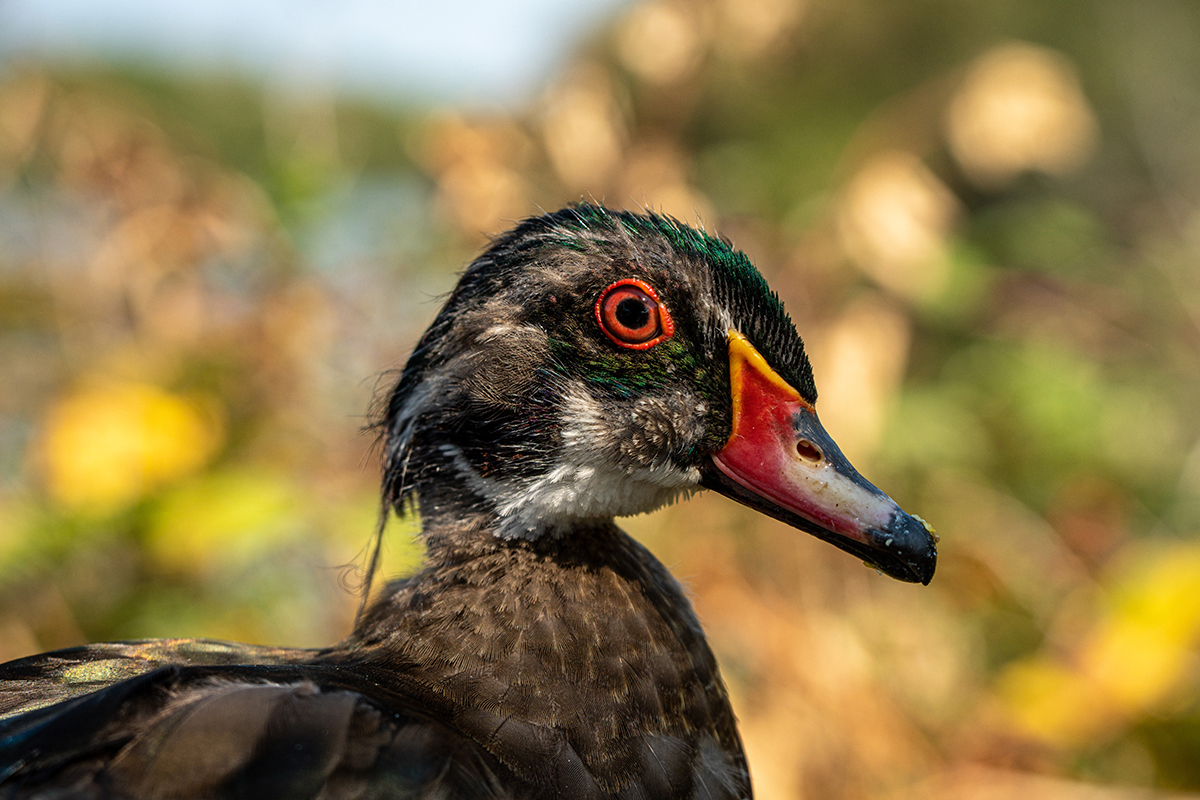Landscape Photography: Biodiversity in BC
Stefan Malloch’s Tamron 50-400mm VC ultra-telephoto zoom helps him find photographic inspiration in the Canadian countryside.
Share the article:
More Photo Tips | Video Gallery | Photo Gallery | Enewsletter sign-up
By Jenn Gidman
Images by Stefan Malloch
Some people stumble onto photography accidentally, or as a peripheral part of their career. For Stefan Malloch, his inspiration for taking nature photos came from his late mom, a passionate hobbyist. “She was my biggest supporter, and I dedicate everything I do now to her,” he says. “As for my own photographic career, it was jump-started from a single powerful photo I took of my daughter’s birth. That image won a lot of awards and earned me a spot for the first time on Team Canada for the World Photographic Cup.”
Today, Stefan’s portfolio includes everything from wedding and portrait work, to fine art, editorial, and product images. Nature and landscape photography, however, holds a special place for him, partly due to where he lives in the British Columbia city of Delta, outside of Vancouver. “There’s so much biodiversity and stunning scenery here,” he says. “We’ve got a bird sanctuary with lots of migratory birds, and then an hour or so away, we’ve got the mountains, which serve as home to bears, moose, elk, and more.”
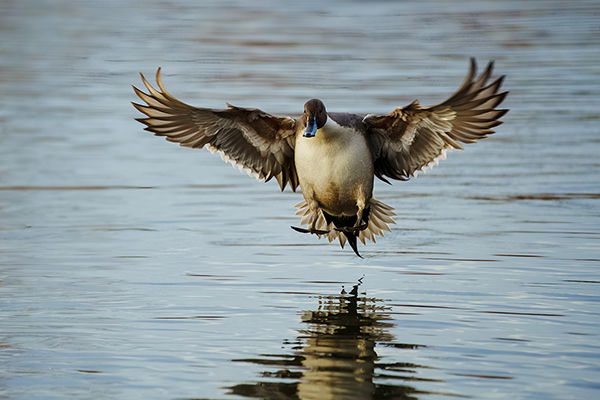
50-400mm (314mm), F6.3, 1/1250 sec., ISO 2000
Click image to view larger
To help him capture this abundant wildlife, and the landscapes that serve as their backdrop, Stefan has tapped into the Tamron 50-400mm Di III VC VXD ultra-telephoto lens for his Sony mirrorless camera system. “The 50-400mm is one of the most impressive and versatile lenses on the market, hands down,” he says. “From its compact form (it’s just 7.2 inches long) and light weight of 40.7 ounces, to its fast and accurate autofocus, this lens is a marvel of engineering.”
Stefan has so far only shot handheld with the 50-400mm for landscape photography, so the Vibration Compensation (VC) mechanism has been a most welcome feature to help him control camera shake. “I also need to mention the 50-400mm’s mind-blowing minimum object distance of 9.8 inches at the 50mm end, which allows me to get so close to my subjects,” he says. “Normally, I wouldn’t be able to do that with an ultra-telephoto zoom lens. Plus, the dedicated Tamron Lens Utility software I use with this lens is an incredible complement.”
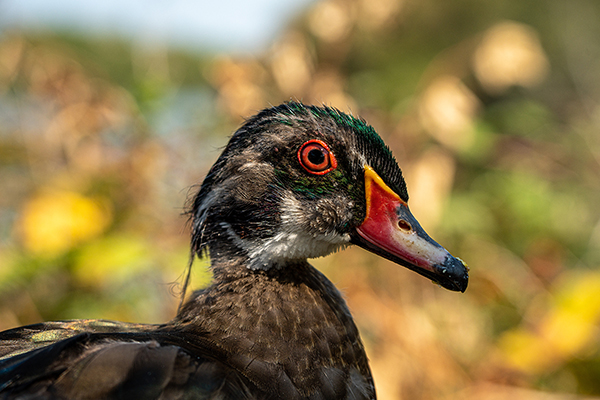
50-400mm (95mm), F6.3, 1/800 sec., ISO 160
Click image to view larger
STEFAN’S QUICK TIPS FOR NATURE PHOTOS
Seek out magic moments.
When I’m scouting for what pictures to take, I’m looking for the difference between a boring shot and an award-winning one—and what I’ve found is that the difference is often 1/10th of a second. Anticipating and timing is everything when you’re looking for any signs of activity or movement. Having a versatile lens like the 50-400mm is key in landscape photography situations, because you want to be able to zoom in or out to capture an animal’s eye opening or a split-second yawn, or a change in the clouds or errant ray of sunlight that suddenly lights up a landscape.
Shoot in burst mode when photographing wildlife.
Insects such as bees are especially fast-moving creatures, so it can be challenging to take the shot you want in a single frame. By using burst mode, you increase your chances of capturing that precise moment where everything aligns just so. By shooting in rapid succession, as I did here in the nature photos of the bee on the flower, you might take 10 pictures in total, and maybe just one or two of them will show the intricate details of the insect, such as the pollen on its legs or its delicate antennas positioned a particular way.
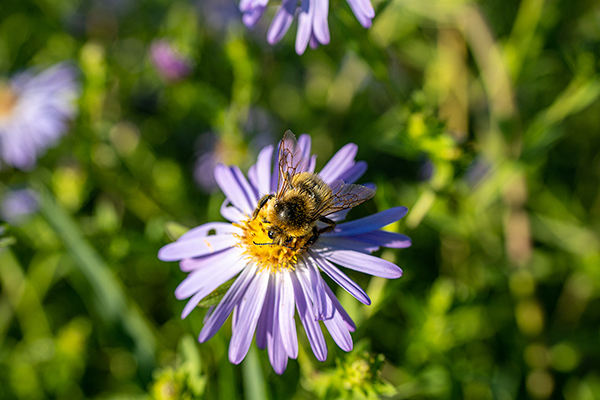
50-400mm (50mm), F8, 1/640 sec., ISO 160
Click image to view larger
Photograph familiar places at different times of the day and year.
By revisiting a familiar scene, you can witness the transformations that occur with varying lighting conditions and seasons. My hometown is a farm-based community, and the barn you see photographed here is one I take pictures of often. Documenting its evolution allows me to witness the contrasts of color and mood, and it forces me to revisit how I’m taking the picture each time I’m there. This type of creative exercise comes in particularly useful for landscape photography if you live in a more remote area where options for diverse subjects might be limited.
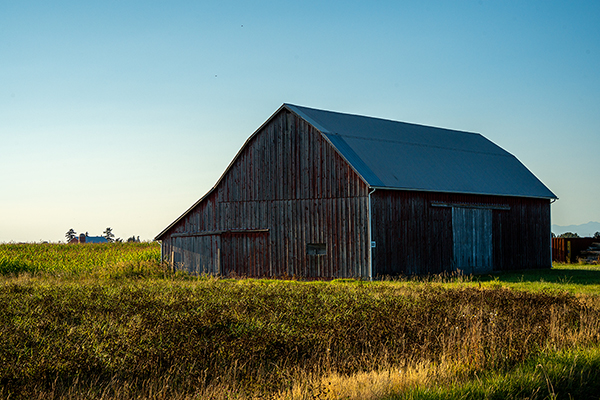
50-400mm (61mm), F11, 1/500 sec., ISO 160
Click image to view larger
Craft captivating compositions.
Immerse yourself in the scene and align all of the elements to create a pleasing composition. It can be challenging to figure out what to focus on in a “busier” environment, like this field of daisies I was exploring with my daughter. The trick is to first figure out the section or details you want to capture, then move around to explore different angles. You may also choose to incorporate background and foreground elements for added visual appeal, and to create depth. I love the compression I can get with the longer focal lengths on the 50-400mm lens, as well as the impressive transitions I’m able to achieve with the minimum object distance (MOD) of 9.8 inches on the 50mm end.
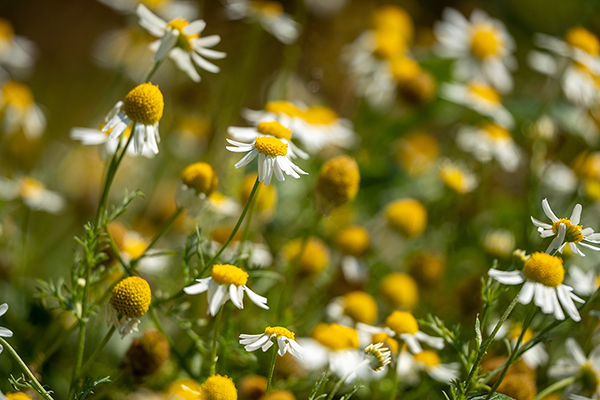
50-400mm (400mm), F6.3, 1/800 sec., ISO 100
Click image to view larger
To see more of Stefan Malloch’s work, check out his website, Instagram or YouTube channel.
Is your Tamron News subscription up to date? Click to subscribe to all editions of Tamron News featuring how-to tips, new product news, contest announcements and inspiration!
More Photo Tips | Watch Videos | Learn More About Tamron Lenses | Photo Gallery
